In a time where surviving without a decent paying desk job is next to impossible due to all the student loans you have to pay back, medical debts you might have, and cops writing tickets for basically anything and everything you do, it is still possible to live off the land. How? By growing weed, of course.
In the last 100 years or so since the industrialization of the nation, the number of citizens in the US grew from 76 million in 1900. to just over 300 million nowadays.
So, given that more people live in the US today than ever before, there should be more farming jobs and such than in 1900s, but over time the international trade has become huge and there isn’t much need for farmers to grow food in the US as much as before.
Around 20% of all food in the US is imported in the 21st century.
The industrialization age also brought us machines able to replace farmers, or at least make their jobs easier and less demanding, which lead to less people farming.
All of a sudden we had tractors and harvesters, and all sorts of machines.
Jobs that previously took ten men hours now take only a few minutes with the help of modern machines.
Suddenly nobody wanted to farm anymore, computers and desk jobs started being the norm for a good life because farming was getting less and less profitable for farmers, and was still considered as a hard job since it included heavy labor to some extent.
Machines got more expensive, the bigger they are the more maintenance they need, field expenses started getting bigger and bigger, and in a few decades, small family-owned farms became a thing of the past.
Soon after, the rise of huge company-owned farms intended to grow food for the masses started popping up everywhere around the world.
Escape from the pesticide industry
In the late 20th century we witnessed the rise of Monsanto, Bayer, Dupont, and many other companies that primarily focused on growing genetically altered crops which would, in theory, be able to feed the whole world.
Quickly, the whole world fell into a scare.
In a matter of months, almost every citizen in every “first world” country has heard the term GMO — genetically modified organism.
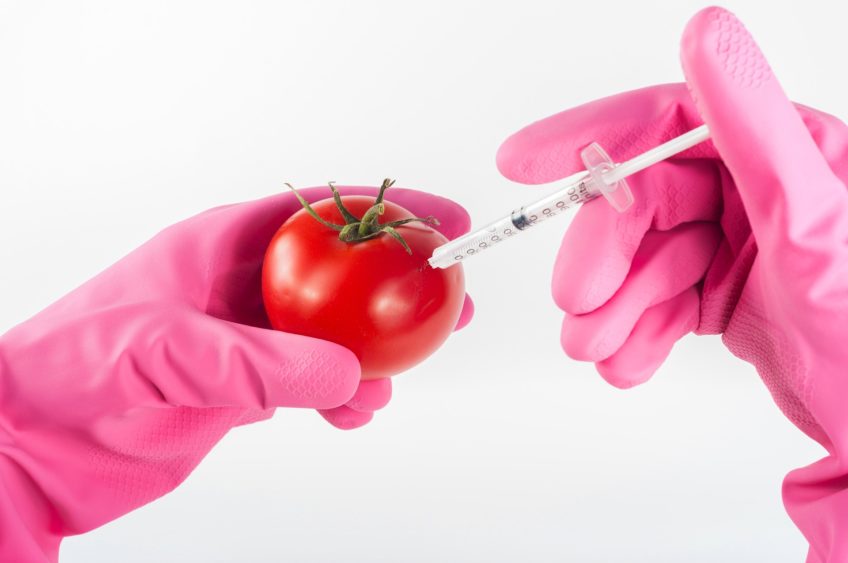
The GMO scare began, and it still hasn’t ended.
This scare brought about a fundamental change to the American millennials in particular.
Americans became slightly more aware of what they are taking in and started caring more about their look and health.
Young people in particular.
Millenials are the generation which is currently in the position to make a huge impact on the world for the next couple decades.
So, how are they doing it?
Well, millennials are becoming increasingly more aware of the problems we are facing now, but also the one we will face in the future.
The internet and other various sources of information have had a huge impact on this generation. It made access to information easier than ever.
You could find out how many calories there are in a banana, and how many bananas you weigh.
But that’s not what millennials used the internet for, or at least not the only thing.
They found out that there are ways to eat healthily, and learn how to grow food and other things in an organic and relatively cheap way.
Organic farming started taking over in smaller communities as more and more people started raising awareness of the GMO foods being sold in stores.
Wanna learn how to do it?
Enter WWOOF — World Wide Opportunities on Organic Farms, a non-profit organization offering you the chance to go out on the land and learn organic farming.
So, what is the first thing that comes to mind when someone says organic farming?
For me, it’s a tomato garden in your front yard. Cliche, I know.
But, did you know that you can sign up with WWOOF and learn tricks for growing weed in an organic environment?
Can growing weed get more organic?
The current system heavily relies on couple dozen companies supplying the states medical program, and the states with recreational cannabis already legalized have their own ways of supplying the stores and dispensaries.
Those producers have to be licensed and the cannabis products are further tested and assessed, and the whole process is very elbow greasing.
This is why we have Derek “Floyd” Johnson, a young grower and a part of the WWOOF organization, explain to us what does it mean to grow plants in an organic way, and how they fare when compared to the lab-grown plants.
Derek, what can you tell us about yourself and your work?
— I’m working on a farm in Calaveras County, CA. I’ve worked on over 30 crop farms in the last 2 years. The profession I do is called a permacultural designer, which means that I come to your farm and I design and build a garden with a self-sustainable system, and teach people how to grow weed as we build the garden. So basically the only thing future growers in that garden will need is a continuous stream of water.
What happens once that part is done?
— After my job is done, I leave. The growers don’t have to pay me for any of it, if I’m invited to help I will come to their house and do it for free. However, this can often take up to several weeks, so I might have to crash at their place.
Are you designing a garden these days?
— Yes, I am currently at a 168-acre alpaca ranch in California, and we are using the alpaca dung as manure to fertilize the ranch on which we grow 6 strains at the moment. There’s a couple of us here and we’re all doing the same thing with WWOOF.

How did you decide this is something you want to do for a living?
— I always knew I wanted to get in the permaculture. Since I was a kid I’ve had a mentality of building something instead of buying it. It is important to know that permaculture and WWOOF are not exclusively tied to cannabis.
WWOOF members can choose from many different organizations and types of farming they want to learn, I just opted into learning and working with cannabis. In fact, WWOOF didn’t even have cannabis farming as an option up until a few years ago…
Why grow cannabis over some other plants?
— Well the answer to this question has two parts. Firstly I’ve always been a very vocal proponent of both medical and recreational cannabis. With some of my health issues coming to light in the recent years, taking my medication is very important to me. So at one point I knew that I wanted to do it on a level that was good for me I would have to grow it instead of buying it from the dispensary.
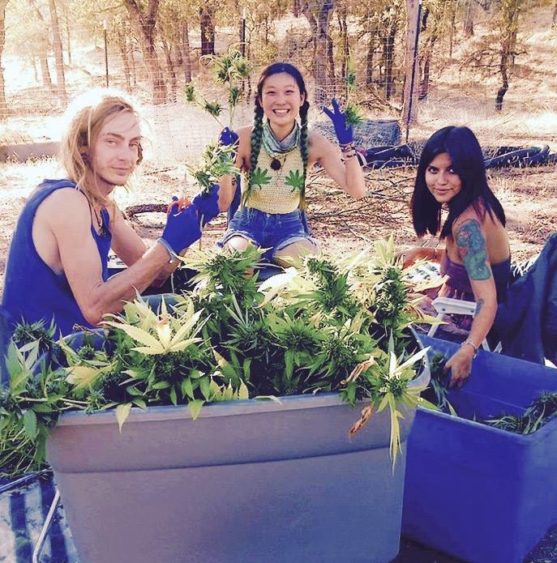
So why do it in California specifically?
— My home state is Michigan, and if you know something about Michigan it’s that it gets cold in fall, then really cold during winter, cold again in spring and slightly less cold over summers. Not really a weed growing climate. Canada was an option too, but Canada is really just Michigan². Those are no places to be growing cannabis as you can grow it outdoors only once per seasons, and most of the state’s supply comes in from indoor farms souped up with chemicals to make the buds grow bigger. It’s not for me…
On the other hand, California is the place to do it. Basically, every other farm is growing weed one way or another.
So how are the growers doing it in Cali?
— The main theme here is going back to the roots, using dirt water and animal feces to enrich the ground and make it more plant-friendly. And that’s not only limited to California, there’s a whole lot of growers all over the West coast, in Oregon and Washington, that’s all pot land. Thousands of growers working the same job as me…
However, it’s important to know that people here aren’t doing this for money. Sure, there’s money involved but that’s because we are a part of the WWOOF program and these farmers are our hosts. They house us and feed us and we work for them about 5 hours per day. We are not out to make money and I’m never going to do this with the only reason in mind being to make money.
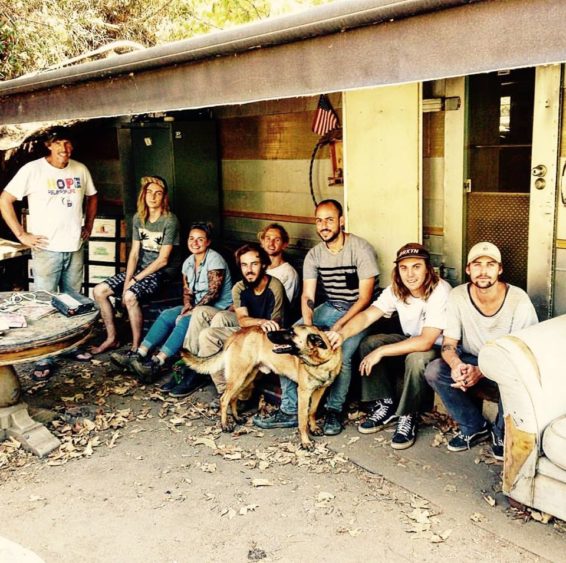
What are some of the biggest challenges?
— Well, unfortunately, the laws are still the biggest challenges. You can only grow so much marijuana in the state of California. The state has legalized recreational cannabis but they leave it to be moderated on a county level. So, how much cannabis you can grow depends on the county your in. The laws have been made so that growing weed in only a few of the counties can bring you profit. In other, you will just dig yourself a debt hole too big to fill with any amount of weed money…
So in other words, the costs of growing right now are huge and they are making it hard for farmers to grow marijuana in certain counties in California. So, only the rich upper class can do it in a way that it is fully within the boundaries of the new laws.
So how do you know if you are maybe doing something illegal?
— You really can’t know that because at every moment you could be doing it and not knowing it. There is a lot of gray zones in the laws so very often you’ll find yourself in a position to call your lawyer and your county Sheriff’s office and they both come down to the farm and take the case over. But we are never using the city’s power, or water, or anything like that. If we need water we use a natural stream, or we dig up a well, for power we use renewable energy the solar panels and windmills, we go straight back to nature 100%. We are definitely doing things the hard way and by the book.
How much cannabis do you grow in a cycle?
— As I said, we are growing 6 different strains and we are pulling an average yield of 400 pounds (~180kg) per cycle. However, it all depends, in the last cycle we barely had 300 pounds.
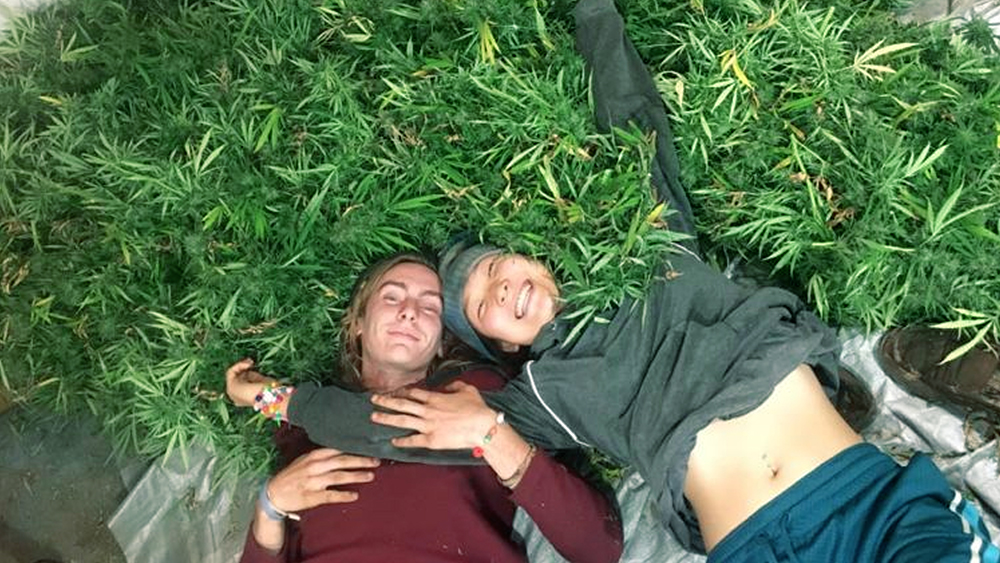
What is the plan for future?
— When I’m done traveling around teaching people how to grow cannabis in the most organic ways possible known to men I’m definitely going to run a homestead with lots of organic crops to feed myself and people around me. It’s really the only way to escape the system… It is really easy to maintain a garden once everything is in its place so why not do it for myself, you know?
Try being a farmer, I double dare you
On a scale of 1-10 how hard do you think it is to be a farmer, or in particular a cannabis farmer?
Given that marijuana is notoriously hard to grow, I would assume at least a 6 if working an oil rig was a 10, or any of the Dirty Jobs with Mike Rowe…
Here’s a fun test you could do for yourself if you think you could be a farmer without a gram of previous farming knowledge: try growing a plant. Not even a weed plant (although you could if it is allowed in your state) just any plant, tomato or carrots will do just fine. Don’t use store-bought fertilizers and don’t use tap water. Find out how hard that is for yourself.
Growing delicious and organic food takes time, effort and a little bit of TLC. The plants you grow might not look the prettiest or most ideal as you’ve imagined them, and they might even taste different.
Which is exactly why GMO companies give it none of those 3 key factors. They pump fruits and vegetables with chemicals so that they would grow faster and bigger – the exact opposite of what organic farming does.
Besides, what is more organic than growing your own bush?
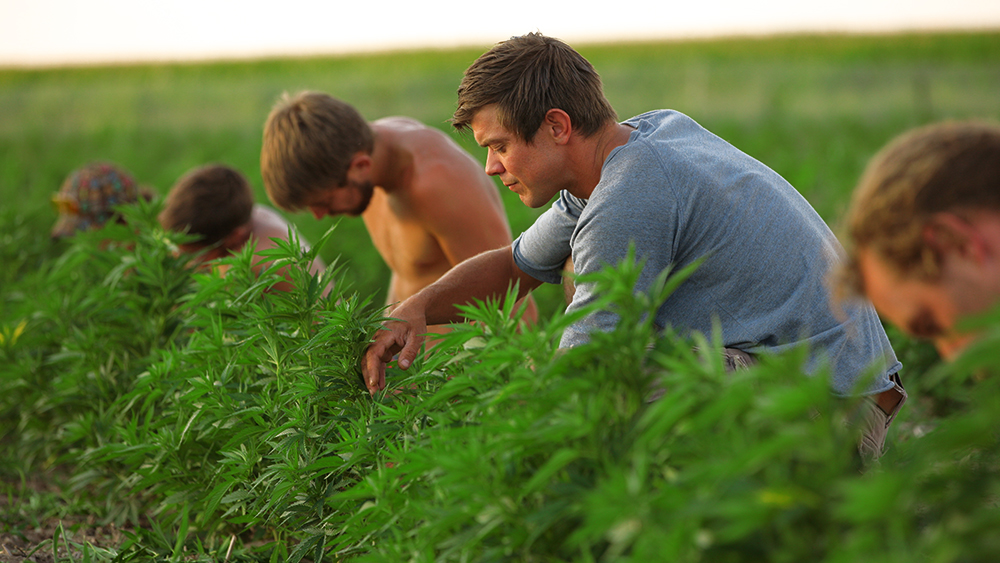




Derek Floyd Johnson December 13, 2017 at 3:50 am
Hey thats me! Find your own adventure anywhere in the world at wwoofusa.org Great read my friend! For more questions visit the website!
Gabriel December 21, 2017 at 3:24 pm
Permaculture and an annual farm? A monocrop? Just because you say its permaculture diesnt mean it is. A permaculture system is much more diverse and complex than alpacas and cannabis.
Floyd Johnson April 17, 2018 at 1:34 pm
Hey hate bag he didnt want to know about those things, he interviewed me over cannabis, or would you like to come down to the farm and make sure im growing my spinach to your liking?
Dirt Flaps Jackson November 17, 2018 at 1:48 am
*triggered
Aeryn Dillinger January 9, 2019 at 9:34 pm
Have you been to any different continents with this program?
Alex January 10, 2019 at 9:52 am
Permaculture is practiced on every continent, however it is present on a very small scale.
Chris March 14, 2019 at 10:06 pm
This sounds like dream work and travel combined, well done indeed, a path of more opportunity for joy making , spreading the wisdom of Nature's Gifts regreening the land -smiling and dancing more often too no doubt? i'm in the UK and while we're in the dark ages regarding the law (Mrs May) she's nothing like that oh so joyous month but i'm sure she is in her family - she may have one of those little dogs that wees itself in sheer excitement at seeing her? I wonder if there is a plant that is very similar in its growing needs to that of Natures Gifts but that is also legal? - then I would love to have you come wWOOF at my tiny home in lovely North East England in what was a mining village - people dug the earth here and pulled out parts of the industrial revolution while being smashed on rocks by the ruling class -but they did it with all they had - you are welcome to my bed and daughters bedroom - obviously we won't be in there too! and I can sleep on camping beds downstairs! I work a few days a week so we can just put you on a 30metre chain (about the length of the garden) I think you will find that's more generous than the rules suggest too. Or we can learn to trust in the process of joy making. This is the knowledge we need and then people can simply go plant until we find a plant that loves it here and weeds spread from the minds up in our heads out into many seed beds and a gentle green tsunami comes home. where the wind sounds like this https://www.youtube.com/watch?v=Wy-v-FgiUD8
Jessica Marti July 27, 2020 at 9:40 pm
I would absolutely love to be a part of this culture. My bf and myself have been looking for a sustainable community that embrace cannabis and diversity.